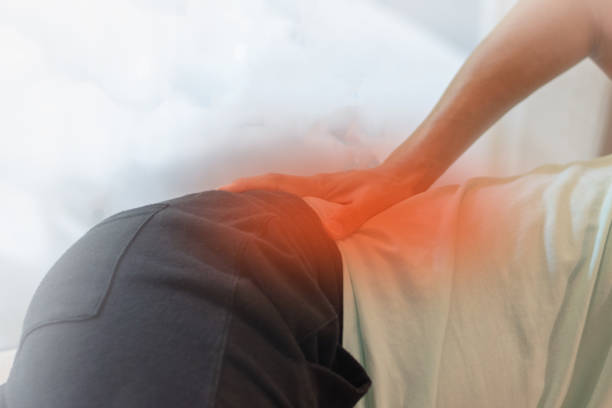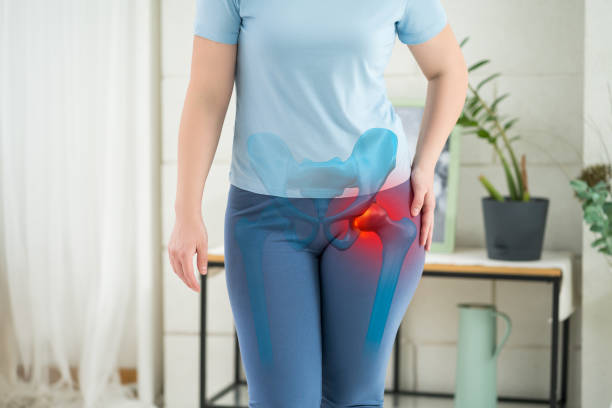Workouts
What Exercises Can Help Hip Bursitis
Hip bursitis is a painful condition that affects a large number of people, particularly those who exercise regularly. It happens when the tiny, fluid-filled sacs (bursae) in the hip joint get inflamed, producing pain and discomfort. Overuse, injury, and arthritis are all potential causes of this illness.
Fortunately, workouts can help relieve the discomfort and inflammation caused by hip bursitis. These exercises are intended to stretch and strengthen the muscles surrounding the hip joint, resulting in more mobility and reduced pain. Include these exercises in your regular routine to help manage your hip bursitis and enhance your overall quality of life.

Understanding Hip Bursitis
Hip bursitis is a painful and inflammatory illness that affects the bursae, which are tiny fluid-filled sacs that cushion the bones, tendons, and muscles around the hips. In this part, we will look at the causes, symptoms, diagnosis, and treatment of hip bursitis.
Causes and Symptoms
Hip bursitis can be caused by a variety of reasons, including aging, injury, and hip trauma. Hip bursitis can also be caused by repetitive hip-stressing activities such as running, cycling, or prolonged standing. People with underlying diseases like rheumatoid arthritis or gout are more likely to develop hip bursitis.
The most typical sign of hip bursitis is pain on the outside of the hip that might spread down the thigh. Walking, climbing stairs, or standing up from a seated posture may make the pain worse. Other symptoms include edema, pain, and stiffness in the hip area.
Diagnosis and Treatment
If you have recurrent hip discomfort, visit a doctor for an appropriate diagnosis. To rule out other problems, your doctor may conduct a physical examination, obtain a medical history, and request imaging tests such as an MRI.
Hip bursitis is often treated with a mix of medicines, steroid injections, and physical therapy. Acetaminophen and ibuprofen are two over-the-counter pain medications that can aid with inflammation and pain. In rare circumstances, your doctor may prescribe stronger painkillers.
Steroid injections can provide temporary comfort by lowering inflammation in the affected area. Physical therapy exercises can assist increase hip strength and flexibility, lowering the risk of further injury. In severe cases, surgery may be required to remove the inflamed bursa.
To summarize, hip bursitis is a painful ailment that can be caused by several circumstances. If you have recurrent hip discomfort, you should consult a doctor for a proper diagnosis and treatment.

Exercises for Managing Hip Bursitis
Hip bursitis is a painful ailment that can limit mobility. However, there are exercises that might help you control your symptoms and increase your range of motion. In this part, we will go over some of the most effective exercises for hip bursitis.
Stretching Exercises
Stretching exercises can help reduce muscle tension and increase flexibility. Some of the most effective stretching exercises for hip bursitis are:
- Hip Flexor Stretch: Relieves strain in hip flexors, which can lead to hip bursitis. Kneel on one knee and place the other foot in front of you. Lean forward and feel a stretch at the front of your hip. Hold for 30 seconds and then switch sides.
- Clamshell Stretch: Clamshell Stretch targets the glutes and hips. To do this stretch, lie on your side, knees bent and feet together. Lift your upper knee as high as possible while keeping your feet together and your pelvis still. Lower your knees back down and repeat 10-15 times on each side.
- Iliotibial (IT) Band Stretch: Stretching the iliotibial (IT) band can help alleviate hip pain. To do this stretch, stand with one foot crossed over the other. Lean to the side opposite your crossed leg and feel a stretch in your outer hip. Hold for 30 seconds and then switch sides.
Strengthening Exercises
Strengthening exercises can help to improve hip stability and lower the chance of future injury. Some of the most effective strengthening exercises for hip bursitis are:
- Hip Abduction: Hip Abduction exercise works the muscles in your outer hip. To do this exercise, lie on your side with your legs straight. Lift your upper leg as high as possible without shifting your pelvis. Lower your leg back down and repeat 10-15 times on each side.
- Wall Squat: This workout strengthens the thighs and glutes. To do this exercise, place your back against a wall and your feet shoulder-width apart. Slide down the wall until your knees are bent to a 90-degree angle. Hold for 30 seconds, then rise up.
Low-Impact Cardio Exercises
Low-impact cardio exercises can help you enhance your cardiovascular health while putting less strain on your hips. Some of the most effective low-impact aerobic activities for hip bursitis are:
- Walking: is a low-impact exercise that promotes cardiovascular health and lowers the chance of hip injury.
- Cycling: is a low-impact exercise that promotes cardiovascular health. If you have access to a stationary bike, this is an excellent method to get some exercise without putting undue strain on your hips.
- Swimming: is a low-impact workout that improves cardiovascular health and lowers the incidence of hip injuries.

Prevention and Maintenance
Hip bursitis can be avoided by making some lifestyle changes. Maintaining proper form during physical activity, particularly repetitive actions such as running or lifting weights, might lower the risk of developing hip bursitis. To avoid injury, avoid overuse and take breaks as needed.
To avoid hip bursitis, we should consider our weight. Being overweight can increase pressure on our hips, leading to bursitis. Maintaining a healthy weight can help lower the likelihood of developing hip bursitis.
If you have hip bursitis, you should contact a physical therapist. They can assist us pinpoint the source of our bursitis and teach us techniques to help control the pain and prevent future flare-ups.
In addition to seeing a physical therapist, we may take regular care of our hips to avoid bursitis. This includes monitoring our activity and avoiding repetitive actions that can lead to bursitis. When we experience pain or discomfort, we should rest and adopt anti-inflammatory measures, such as icing the affected area.
Overall, avoiding and controlling hip bursitis necessitates a mix of lifestyle changes, continuing treatment, and monitoring. By following these precautions, we can lower our chances of getting hip bursitis and manage any pain or discomfort that may arise.

When to Seek Professional Help
If you have hip discomfort, you should get professional help to establish the underlying cause. If you have hip bursitis, you may notice swelling, redness, and discomfort in the afflicted area. In some circumstances, an infection may be present.
If you experience any of these symptoms, visit a doctor as soon as possible. They can do a physical examination and arrange imaging tests to confirm the diagnosis. They may also suggest rest, ice, and over-the-counter pain medicines to help you manage your symptoms.
In addition to seeing a doctor, you might benefit from working with a physical therapist. They can create a specific workout program to enhance your hip strength and flexibility, lowering your chances of having hip bursitis again in the future.
Overall, if you have hip pain or other symptoms, you should get professional care. With the correct treatment and exercise program, you can control your symptoms and resume your daily activities as soon as feasible.
Conclusion
Engaging in these exercises has empowered me to take an active role in my own recovery and well-being. The gradual progression from gentle stretches to more dynamic movements has allowed me to build resilience in the affected hip, promoting a sense of control over my body’s response to physical challenges.
Furthermore, the incorporation of exercises for hip bursitis has extended beyond mere physical benefits. It has become a mindfulness practice, prompting me to tune into my body’s signals, identify areas of tension, and nurture a sense of self-awareness. This holistic approach to exercise underscores the profound connection between physical and mental well-being.
In conclusion, the journey to address hip bursitis through targeted exercises has been a game-changer in my pursuit of optimal health. These exercises have not only offered relief from discomfort but have instilled a sense of empowerment, fostering a harmonious relationship between my body and the movements it engages in. As I continue to prioritize these exercises, I am reminded that proactive self-care is a powerful ally in the ongoing quest for a pain-free and resilient body.
Journey of self discovery


